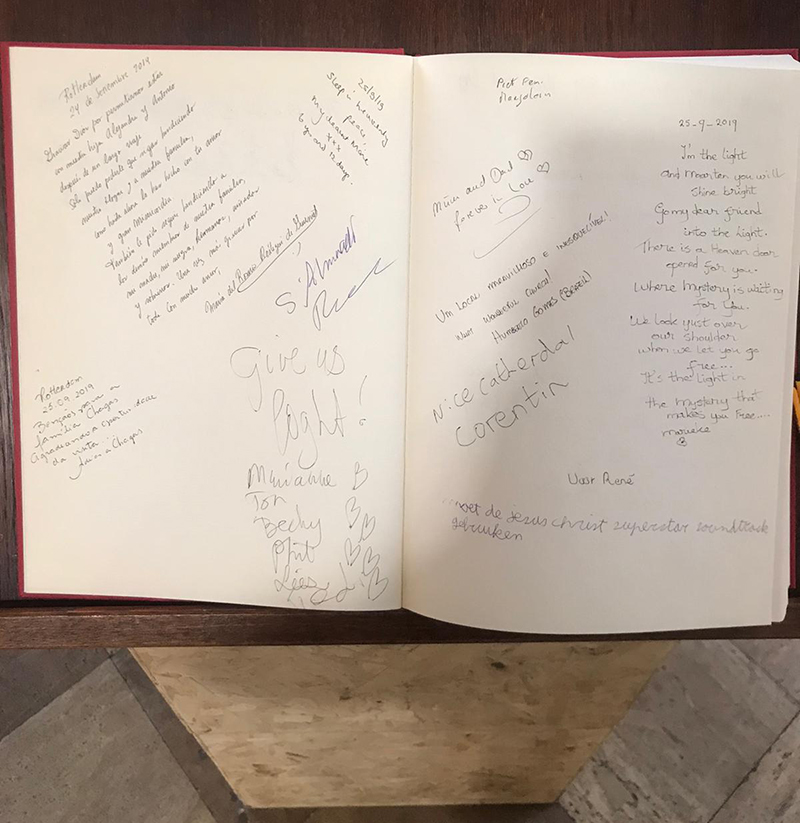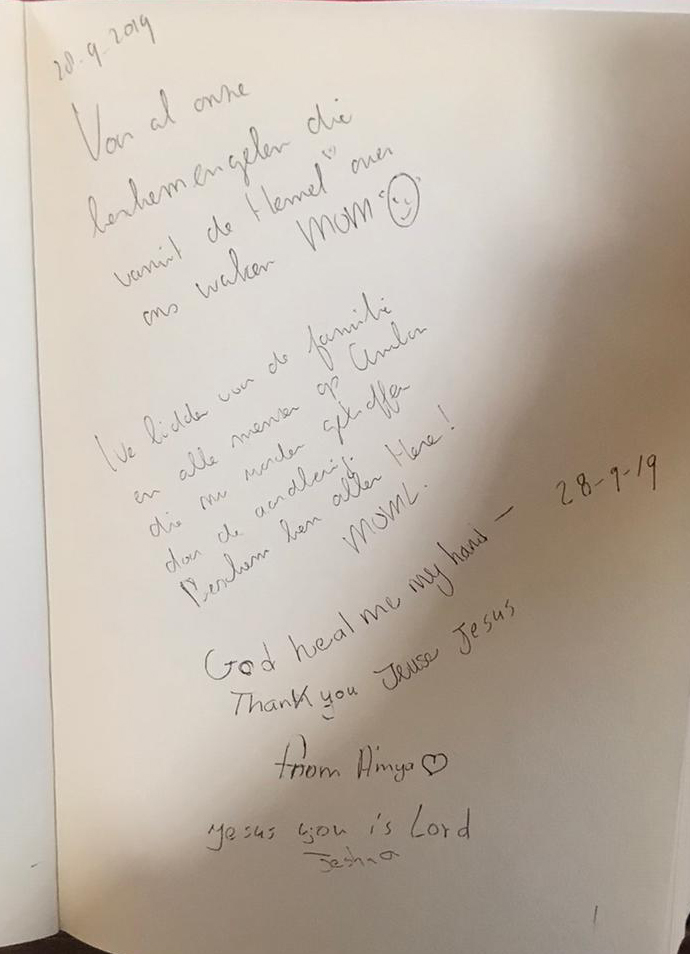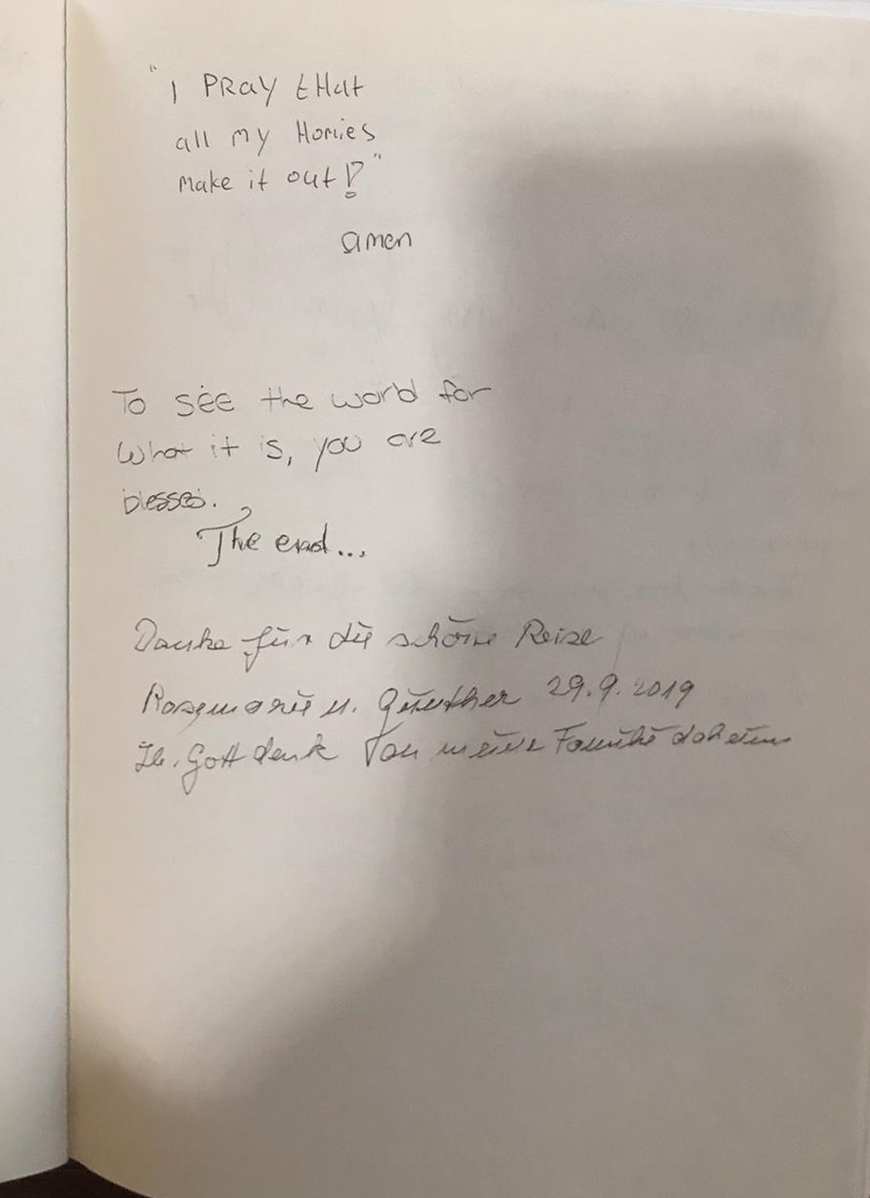Koopgoot / Markthal / Train / Platform central station / Library blaak / Terrace / Schiphol / Homeless shelter / Church
We have chosen the Laurenskerk to analyse and map. We will all go there before thursday so we can share our findings before or in class.
Queering Spaces
MOODBOARD
SKETCHES
Places we talked about
ANALYSES
Laurenskerk analyses
FIRST ANALYSES
- A big building with high ceilings. Probably to impress the visitor and to make them feel small > coming from the christian idea of less individualism and god (and church) being the most important thing.
- A light and open space quite empty too. I’ve read this being because
1: When being renovated after the WOII they choose clear windows instead of the old colored glass windows. Because of the clear windows, there’s more opportunity for light to come in.
2: It being a ‘sober’ church because when build, the people of Rotterdam had sober jobs, mainly working at the harbour or catching fish.
3: Because of the iconoclasm (beeldenstorm.) Adding to this the change of administration, when the church changed from being catholic to protestant.
- You have sections where you’re only allowed to sit and sections reserved for walking (and in corona times for only walking in 1 direction.)
The center is for sitting. The church is a place for listening and only designed for the 1% of the occupied to talk. You listen to the music, the people in charge (as in the pastor etc.) or lastly you listen to the silence. When talking, you should do so in hushed tone.
- The group of people which this building is originally is designed for is getting smaller and smaller. Could it have other purposes? The church recognises it’s problem and their social role it plays. The Laurens church is a icon for the ‘old city’ before the bombing which occurred on the 14th of may 1940. It’s a iconic building to look at architecturally from the outside. Because of this it’s less a building of worship and more a ‘town hall’ when looked from the outside. Inside you can mainly see tourists from Monday to Saturday.
Andreea
Laurenskerk analyses
Jonna
Upon entering, you are immediately aware of the height and emptiness through the echo. You enter with your "normal" speaking tone, but it quickly becomes softer when you are in a quiet environment with only a soft background music.
A man comes to me and asks me what I am coming to do. Pretty direct he is. He shows a bit of interest after which he immediately starts talking about himself. About death. And that he wants to have his funeral ceremony here and why. The barrier to talk about death is quite low here I quickly notice.
It is quiet, hardly anyone in the church. The light that falls on the stained glass gives a serene look. In the middle of the city a place of silence. It is high and the people who are there walk with their hands on their backs like in a museum. There is also a lot to see. It smells like the old days. The association I have with visiting my church from the old days comes back through the smell. Through the candles that burn and the musty smell of the dusty chairs.
Because of the enormous height and size of the windows I feel small. Small corners are filled with text, an image or a message.



Guestbook where visitors can write their experience or a message
The Oude Kerk is Amsterdam’s oldest building and youngest art institutes. The building was founded circa 1213. It has been transformed into a museum, which I believe works well as it’s located in central Amsterdam, 10 min. by foot away from Central Station.
Depending on your finances the admission fee can be considered on the pricier side (7€ for students, 12€ for adults). I was informed at the ticket till that it hosts a video-based art installation and received a pamphlet with information about each film shown and a map of them. I thought it was a really interesting combination, of using such an old and historical church to host a contemporary art installation. The contrast was accentuated by the content of the films; the exhibition is titled “The World After: Conversation Pieces”. It made me realise I’ve never considered a church as a place that can be used to host modern art and installations.
I visited the church at 5.30, 30 mins before the closing time. Most probably due to this I was the only person inside other than 2-3 employees. It was very quiet; I could hear my and the occasional employee’s footsteps and faint sounds from the art film’s audios.
It was well-lit, mostly by natural light coming through the windows; as well as chandeliers.
There was no distinct smell; there were no candles lit anywhere.
In two adjacent rooms there were historical artifacts being displayed.
Even though it’s been converted in a museum, folded chairs remain inside for people to sit in; Upon walking in you’re informed by a text decal on the wall that musicians perform at the church every first Friday of the month.
De Oude kerk (Amsterdam) analyses
Renske
This was at the entrance related to the art exhibita, a map of how it was set up
LOGBOOK
Laurenskerk analyses
SECOND ANALYSES
→ → → →
- Our position, what do we hear
Recording orcestra / Man moving stuff / Machines / Footsteps /
Man talking but it sounded like shushing
- How do we move? / Body movement and orientation
Slowely and gentle. Don't lift your feet to high, because it makes a lot of sound.
We move around the sound of the speaker, in the outer layer of the church, close to the outer wall. You complete the circle around the church, you don't just go 'in and out' or view a little part of the church.
There is only selective access for wheelchairs.
- How does your body feel?
Not relaxed / heavy / sleepy / pressing / not at ease
Without music we would feel more carefull and focust
- Who more is involved / Who are the different groups / How do they interact?
Older couple around the age of 50-75 → they walk around together without saying much, I only hear the man say something to the woman, but it sounded like shushing from the distance I was at
Woman at the register→ smiles warmly and make me feel comfortable. She askes me for my adress because of corona and ask me to pay the entrance fee.
Man at the register → he stares at me without saying anything, giving me te feeling he want something from me or that I should do / say someting. It makes me feel uneasy.
- How are they organised?
...
- What defines the space?
The colors gold and nature/earthy tones. Also the sound of the orgestra or complete silence.
- Architecture
It gives an echo
- For who is it designed?
...
- How does the design previlige our social relations?
...
- What are the rules and how are they showed (visible or not visible)?
...
- What are the norms, values and codes?
...
- How does it interplay with race, sections, etc?
A lot of races are includes because of the cupboards with all kinds of different feast days and believes.
- Details of the sound
The music reminds us of Christmas → warm and open feeling
Soft talks → You can talk a little louder when the music is on → Less intimidating → It would be distrecting while praying
You can hear the rain and sounds/talks from outside when the music is off.
When they move object it makes a lot of noice
Sometimes they play normal music together with the clocks
→ Duncan Laurans when he won the song festifal
Echo
Focus on sound
→ → → →
SOUND
BODY & SPACE
First research
First mapping
BRIEFING
NEW research
FEEDBACK
RESEARCH
INTERVENTION